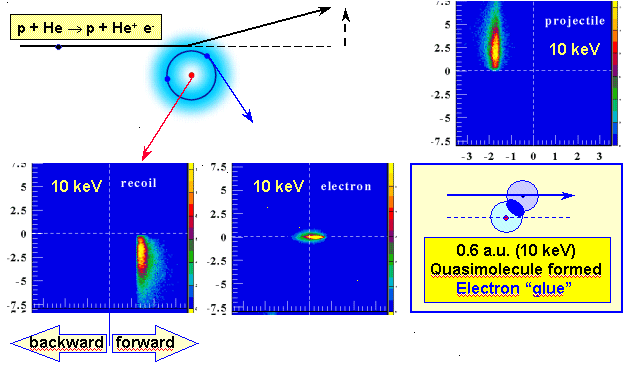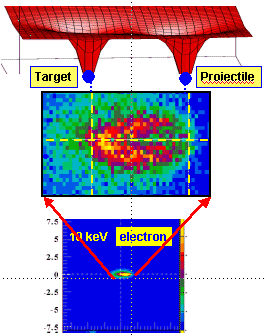Ionization in slow ion-atom collisions - Saddle Point Ionization?
|
In slow ion-atom collisions the target and projectile electrons have sufficient time to adjust quasiadiabatically to the slowly changing two center potential of target and projectile. A quasi molecule is formed for a short time during the collision. 
When target and projectile separate again at the end of the collision, the molecularized electrons relax in most cases to bound states of projectile or target. The cross section for capture is much bigger then the ionization cross section. The longitudinal recoil ion momentum distributions nicely shows this: 
Longitudinal recoil ion momentum distribution of the He+ ion from
15keV p-> He collisions. from link auf ref doernericpeac


The electrons are in the region between target and projectile. A widely discussed mechanism for the promotion is the so called saddle point mechanism. 
The details of the stucture in the electron momentum distribution changes with the projectile velocity.
Projection of the velocity distribution of electrons for single
ionization in 5 (a),10 (b) and 15 (c) keV p-He collisions onto the
scattering plane, defined by the incoming projectile axis
(z) and the final momentum vector of the recoil-ion,
emerging to the -x direction.
The target center is at (0,0) the projectile at (1,0) and
the saddle at (0.5,0)
The data for 10 keV are for a transverse momentum transfer in the
interval kperp,rec= 1-5 a.u..
For the other energies this momentum range is
scaled by 1/vpro in order to
sample approximately the same range of impact parameters
|